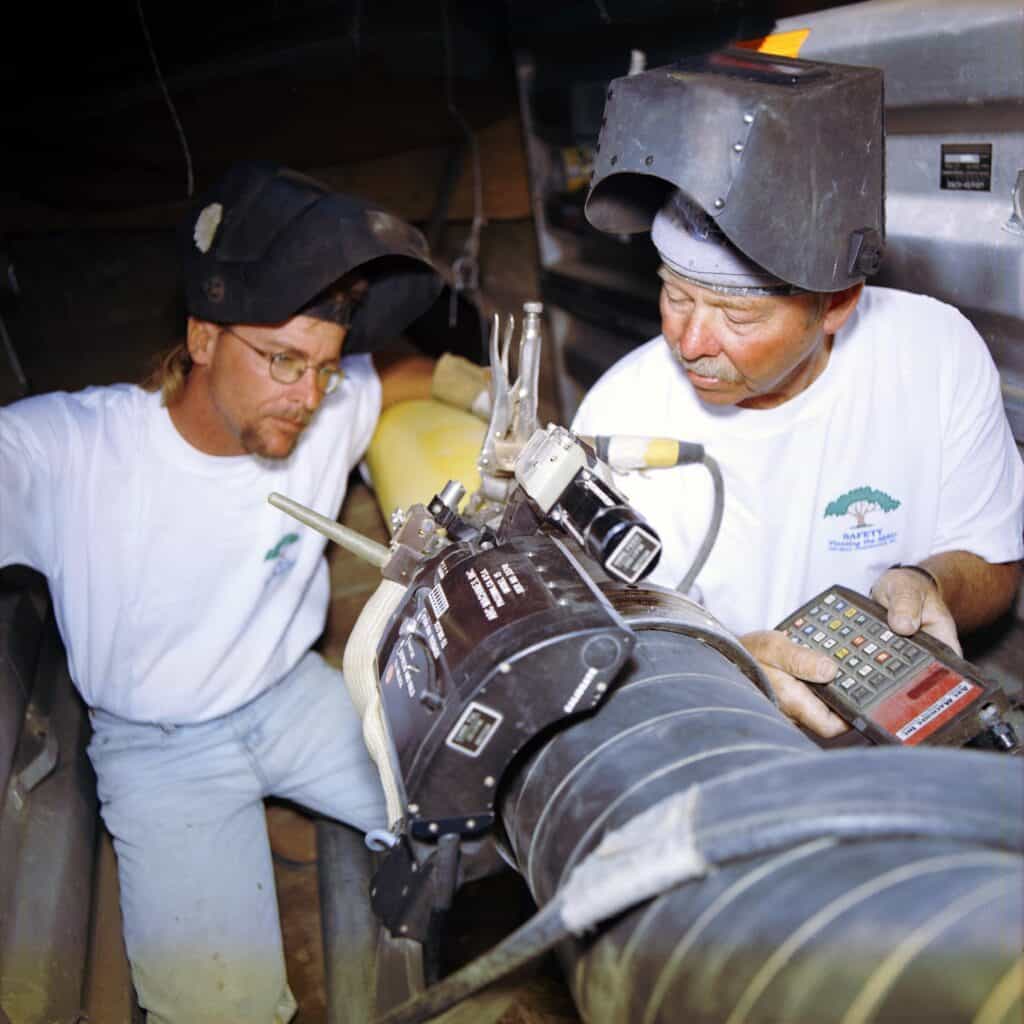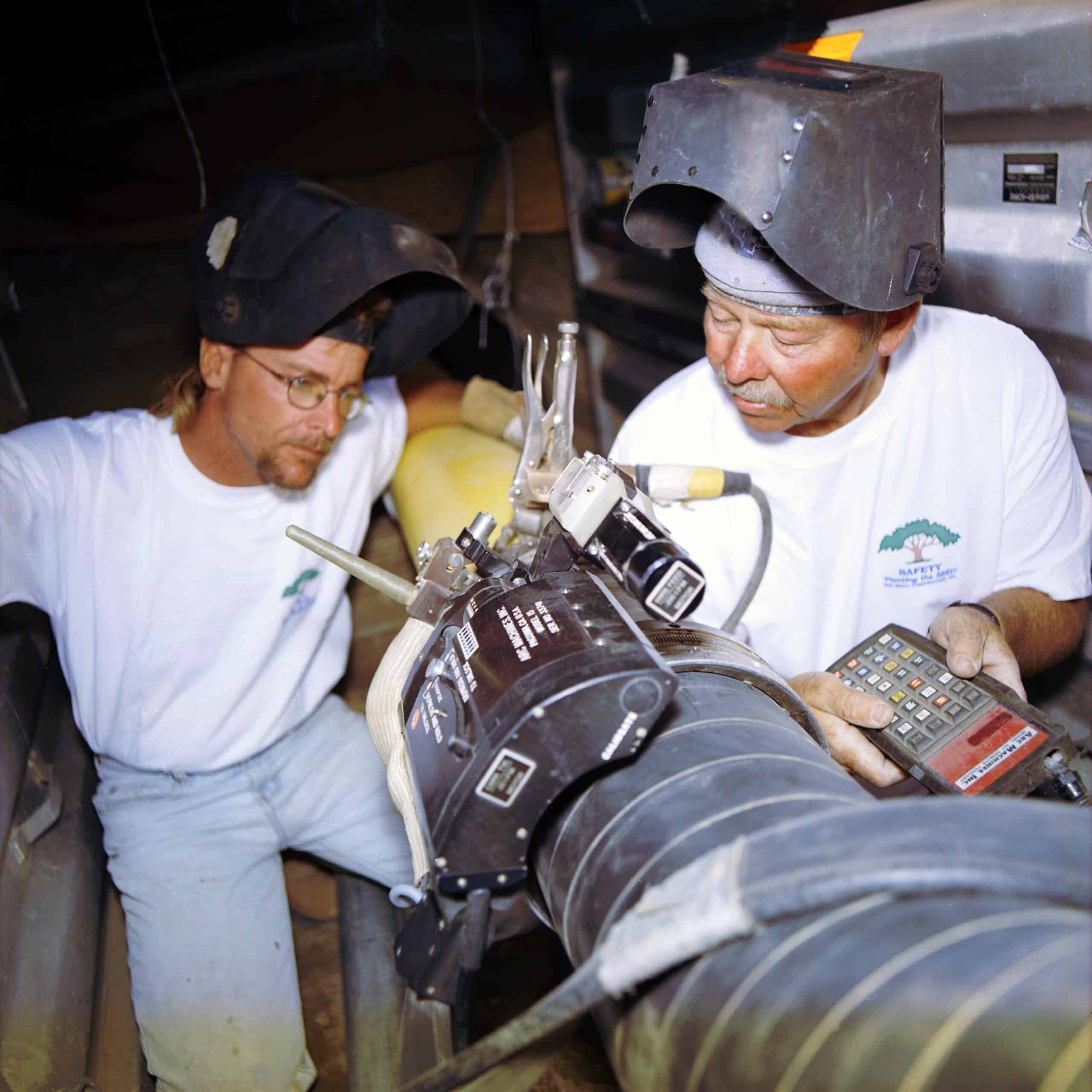
The hardest part of the welding process isn’t the welding itself. It’s trying to weld while crammed into a vehicle’s engine compartment, an aircraft’s wing structure, or while dangling from rafters two stories above the shop floor. Awkward, uncomfortable, or inaccessible positions are a common part of welding. One of the advantages of automated orbital welding is that welders don’t have to try to physically occupy difficult-to-access spaces to weld a joint in a pipe or tube.
A remote welding control unit—also called a remote pendant—paired with an orbital weld head gives the welder the ability to remain in control of welding while having a high degree of flexibility in their own position and placement. In essence, a remote weld pendant allows the welder to simply watch welding take place and make adjustments from the keypad without having to dash back to the power supply. When combined with an arc welding monitoring system, the welder can monitor the weld while maintaining distance, comfort, and focus.
When Is a Remote Welding Control Unit Useful?
The biggest reason to use a remote welding control unit is the ability to adjust welding settings midway through welding without the need to return to the welding power supply. This is how remote welding control units are used when paired with manual welders. If the weld operator decides the weld is running too hot, too cold, or the wire feed is off, they can adjust the machine while observing the effects.
In orbital large bore pipe welding, a welding remote is the primary means the welder has to control the weld head.
Comparing the use of remote welding control units in orbital welding vs. manual welding, it’s clear that they function differently. The remote welding control unit replicates the control panel on the power supply and provides a few unique controls as well. This allows the welder to make minute adjustments as the weld proceeds. In orbital fusion welding, when thin-walled tubing is being joined using autogenous welding, the ability to make in-process corrections isn’t really needed. However, with thicker materials, the welder will have to exercise some control to ensure that it is done properly.
In orbital large bore pipe welding, a welding remote is the primary means the welder has to control the weld head. The welder observes the function of the weld head and makes adjustments as needed to ensure the weld is completed to specification. Occasionally, the welder will still have to put themselves into an awkward position, such as underneath the weld, in order to observe and make slight adjustments to the weld head as it works through the overhead position. However, it is far easier and more productive to adjust elements of the weld while in the observing position than it is to move to the power supply to adjust them. This is where remote welding control units provide their value in orbital welding.
What Functions Do Welding Remotes Offer?
Orbital remote welding control units replicate most of the functionality found on the various welding power supply types. They allow adjustment of welding heat and the motion of the weld head as well as some control over purging gas.
Orbital welding control units generally have interfaces which include the keys below and many others:
- Weld number key: This allows the welder to select the weld parameters from a preset list.
- Sequence start key: The sequence start key initiates the process of welding to the specifications set forth in the loaded welding parameters.
- Sequence stop key: This tells the welding machine to stop the process. However, shielding gas and other parameters needed to reinitiate welding remain on.
- All stop key: Pressing this key brings all parts of the welding operation to a stop and initiates a post-weld purge of the system.
- Rotation jog CW key: This commands the orbital weld head to rotate the electrode in the clockwise direction.
- Rotation jog CCW key: This commands the orbital weld head to rotate the electrode in the counterclockwise direction.
- Weld/test mode key: This initiates the movement of the orbital welder through the motions set by the welding parameters without initiating an arc, allowing the welder to observe its movements and ensure it is set correctly.
- Manual purge key: This manually activates the gas solenoid and leaves it activated until it is pressed again.
- Amps up key: This key raises the amperage of the current flowing from the welding power supply and increases the heat generated by the arc.
- Amps down key: This key lowers the amperage of the current flowing from the welding power supply and decreases the heat generated by the arc.
This complete set of command functions allows a high degree of control during the welding process while it is underway. It allows for the welder to make adjustments to welding parameters that can compensate for unanticipated environmental factors and offers a way for welders to organically react to a largely mechanized and automated process.
Welding remotes should be used for orbital welding of any wire feed system that may require adjustments during the course of welding. Remote welding control units along with remote viewing systems also have a place in allowing welders to observe and control the course of welding in enclosed and difficult-to-access areas. In fusion welding, they are less critical, but can serve as a convenience feature for switching between different weld schedules that might be able to enhance productivity or being able to control the weld head away from the power supply.
Arc Machines, Inc. offers remote welding control units for the Model 415 welding machine. For product inquires contact sales@arcmachines.com. For service, service@arcmachines.com. Contact us directly to learn more about orbital welding accessories.





